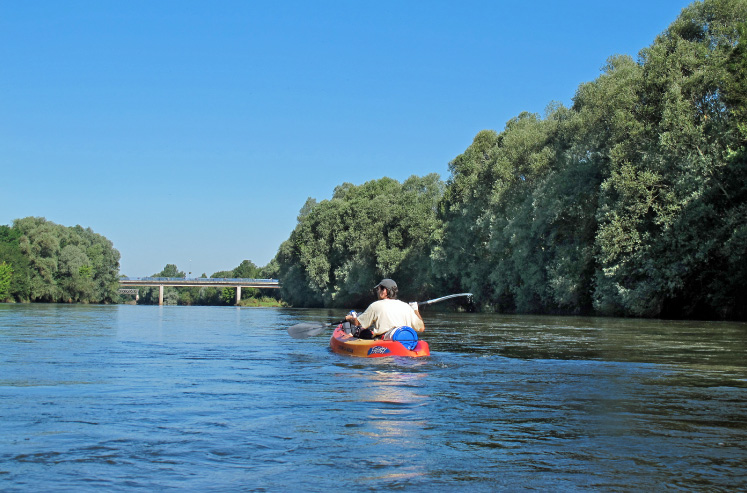There’s a reason kayaking is one of the fastest-growing outdoor sports. “Anybody can do it,” says Hal Ashman, president of Baltimore-based Ultimate Watersports, which runs one of the country’s largest rental fleets. Here, Ashman, along with Joanie McGuffin, coauthor of Paddle Your Own Kayak: An Illustrated Guide to the Art of Kayaking, share the right way to paddle to make your boat go straight, turn on a dime, and help you use your energy wisely.
Step lively. Getting in is often the hardest part. To stay stable when launching from a beach, Ashman says to “put the boat, bow forward, about 60 percent into the water. With one hand on each side of the cockpit, step in, and slide your feet forward” as you set your butt down.
Paddle straight. First, get positioned: Sit up straight with your knees slightly bent and braced against the inside of the hull with your feet on the foot pegs. Then grip the paddle shaft with hands shoulder-width apart, arms slightly bent, to start your stroke. “Rotate from your core,” McGuffin advises. “Plant the paddle in the water vertically at your knee, then pull your body past this anchor point, unwinding your upper torso. As you unwind out of one stroke, transition smoothly and plant the paddle on the other side.”
How to turn. Plant the paddle blade further forward, by your feet, keeping the shaft angle low for maximum reach. Rotate your torso, sweeping the paddle blade in a wide arc toward the back of the boat. “Three or four of those, and you’ll bring the boat right around 180 degrees,” Ashman says.
Be efficient. Ashman says the biggest novice mistake is paddling too deep. Don’t do that—it wastes energy. To keep your paddle at the optimal depth, aim to place your top hand in front of your eye line.
Start Safe. Let someone onshore know where you’re going and when you plan to be back. Consider conditions before you head out. Waves of about a half-foot are around the limit for novices, says Ashman. If you’re just getting started, opt for a guide-led tour. For beginners, practicing “wet exits” (capsizing) and “recoveries” (getting back in the boat) in shallows is a must.





